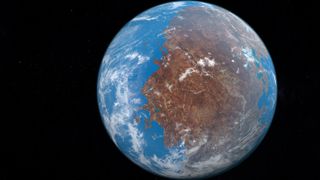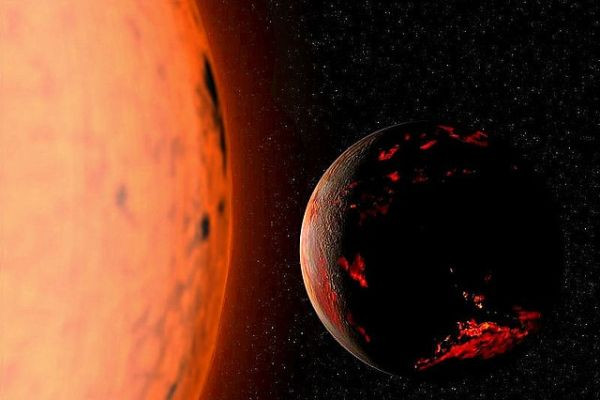The history of Earth is marked by dramatic climatic shifts, with periods of intense heat and cold defining its natural history. Among the most fascinating eras is the time when prehistoric Earth was exceedingly hot. This ancient heat, caused by natural forces and processes over millions of years, serves as a window into the distant past and, more importantly, offers clues about the future of our planet. With today's increasing concerns about climate change and global warming, understanding the Earth's prehistoric climates can help predict what our future world might look like if we continue on the current path of rising global temperatures.
The Scorching Prehistoric Earth
During several periods in Earth's history, the planet experienced temperatures far higher than anything recorded in modern times. Perhaps the most well-known of these periods is the Cretaceous Period (around 145 to 66 million years ago), which was part of the Mesozoic Era. This era is often referred to as a "greenhouse Earth" because global temperatures were significantly higher, with no polar ice caps and tropical conditions extending to the poles.
Throughout the Cretaceous, average global temperatures were up to 10–15 degrees Celsius (18–27 degrees Fahrenheit) higher than they are today. The level of carbon dioxide (CO₂) in the atmosphere was much greater, contributing to this extreme heat. Scientists estimate that atmospheric CO₂ concentrations were between 1,000 and 2,000 parts per million (ppm), compared to about 420 ppm today. This thick blanket of greenhouse gases trapped heat and transformed the planet into a humid, swampy world.
The Paleocene-Eocene Thermal Maximum (PETM)

One of the most extreme heating events in Earth's history was the Paleocene-Eocene Thermal Maximum (PETM), around 56 million years ago. During the PETM, Earth's temperature spiked by about 5 to 8 degrees Celsius (9 to 14 degrees Fahrenheit) in a relatively short period (geologically speaking), over tens of thousands of years. The PETM is often studied as a potential analogue for modern-day climate change because it was driven by a massive release of greenhouse gases, likely from volcanic activity and methane release from seafloor sediments.
The PETM resulted in the extinction of many species, widespread changes in ecosystems, and a rise in sea levels. However, despite these significant disruptions, life on Earth continued to evolve, and ecosystems eventually adapted to the new, hotter environment. But for those living organisms at the time, the world became a very different place.
Causes of Ancient Global Warming
Prehistoric Earth experienced extreme warming for several reasons. Natural cycles, such as variations in Earth's orbit and the movement of tectonic plates, played a major role in long-term climate changes. However, the key driver of these ancient heat periods was the concentration of greenhouse gases like carbon dioxide and methane in the atmosphere.
Volcanic Activity: One of the primary contributors to the warming of prehistoric Earth was volcanic activity. During periods of intense volcanic eruptions, massive amounts of CO₂ and other greenhouse gases were released into the atmosphere. These gases trapped heat and caused global temperatures to rise.
Methane Release: Methane, a potent greenhouse gas, was also a significant contributor to ancient global warming. Large reserves of methane trapped in the ocean floor could have been released suddenly, amplifying the warming process. Methane is much more effective than CO₂ at trapping heat in the atmosphere, although it breaks down more quickly.
Ocean Circulation: Changes in ocean currents and circulation patterns also influenced prehistoric temperatures. When ocean circulation slows down or changes direction, it can disrupt the way heat is distributed around the globe, leading to changes in global temperatures.
What Ancient Heat Teaches Us About Modern Climate Change
Studying periods like the Cretaceous and the PETM helps scientists understand the long-term effects of global warming. While the ancient Earth's warming occurred over thousands to millions of years, today's climate change is happening much more quickly—on the scale of centuries or even decades. This accelerated rate of change makes it difficult for ecosystems to adapt, and the effects of modern climate change are already visible in the form of melting ice caps, rising sea levels, and more frequent extreme weather events.
Lessons from Prehistoric Earth
Rapid Warming Has Dramatic Effects: The PETM, which saw a rapid increase in temperatures, led to mass extinctions and profound changes in ecosystems. Similarly, modern-day climate change is having significant impacts on biodiversity. The faster the warming, the harder it is for species to adapt. This highlights the importance of mitigating today's rapid rise in global temperatures.
Greenhouse Gases Are the Key Drivers: Just as in prehistoric times, the level of greenhouse gases in the atmosphere is the primary driver of modern climate change. The burning of fossil fuels, deforestation, and other human activities have increased atmospheric CO₂ levels at an unprecedented rate. If we continue to pump greenhouse gases into the atmosphere, we could see similar warming trends as those that occurred during the Cretaceous and PETM.
Rising Sea Levels: In ancient times, higher global temperatures caused the polar ice caps to melt completely, leading to much higher sea levels. During the Cretaceous period, sea levels were up to 100 meters (330 feet) higher than they are today. If modern global temperatures continue to rise, the melting of glaciers and ice sheets could similarly result in catastrophic sea-level rise, putting coastal cities and entire populations at risk.
Ecosystems Will Shift: As the Earth heats up, ecosystems are forced to shift and adapt. During the PETM, many species migrated to cooler areas, while others went extinct. Today, we are seeing similar patterns, with species shifting their habitats toward the poles or higher altitudes in search of cooler conditions. The warming of prehistoric Earth teaches us that ecosystems will change, but not all species will survive the transition.
Can We Avoid a Prehistoric Future?
The conditions of prehistoric Earth were vastly different from those today, and many of the natural processes that led to ancient warming are no longer at play. However, human activities have introduced a new factor: the rapid and large-scale emission of greenhouse gases. Unlike the slow geological processes of the past, modern climate change is driven primarily by human activity, and its effects are accelerating.
While prehistoric Earth provides a glimpse into the potential future of our planet, we have tools and knowledge that ancient species lacked. Through technological advancements, policy changes, and shifts in energy use, humanity has the ability to curb the worst effects of global warming. Transitioning to renewable energy sources, reducing carbon emissions, and adopting more sustainable practices could prevent Earth from reaching the extreme temperatures seen in its distant past.
Mitigation and Adaptation Strategies
Renewable Energy: Shifting away from fossil fuels and investing in renewable energy sources like solar, wind, and hydropower can help reduce the amount of greenhouse gases being emitted into the atmosphere.
Carbon Capture and Storage: Technologies that capture and store CO₂ emissions before they reach the atmosphere are also being developed. These could play a key role in mitigating the effects of climate change.
Ecosystem Preservation: Protecting natural habitats and reforesting areas can help absorb CO₂ from the atmosphere and preserve biodiversity, making ecosystems more resilient to changes.
Conclusion
The extreme heat of prehistoric Earth offers a cautionary tale for our modern world. By understanding the natural forces that drove ancient warming, we can better predict the impacts of today's human-induced climate change. The key lesson is clear: rising levels of greenhouse gases can have profound and long-lasting effects on the planet. However, unlike in the past, we now have the knowledge and technology to alter our trajectory. The question is whether we will act quickly and decisively enough to avoid the fate of a sweltering prehistoric Earth.



